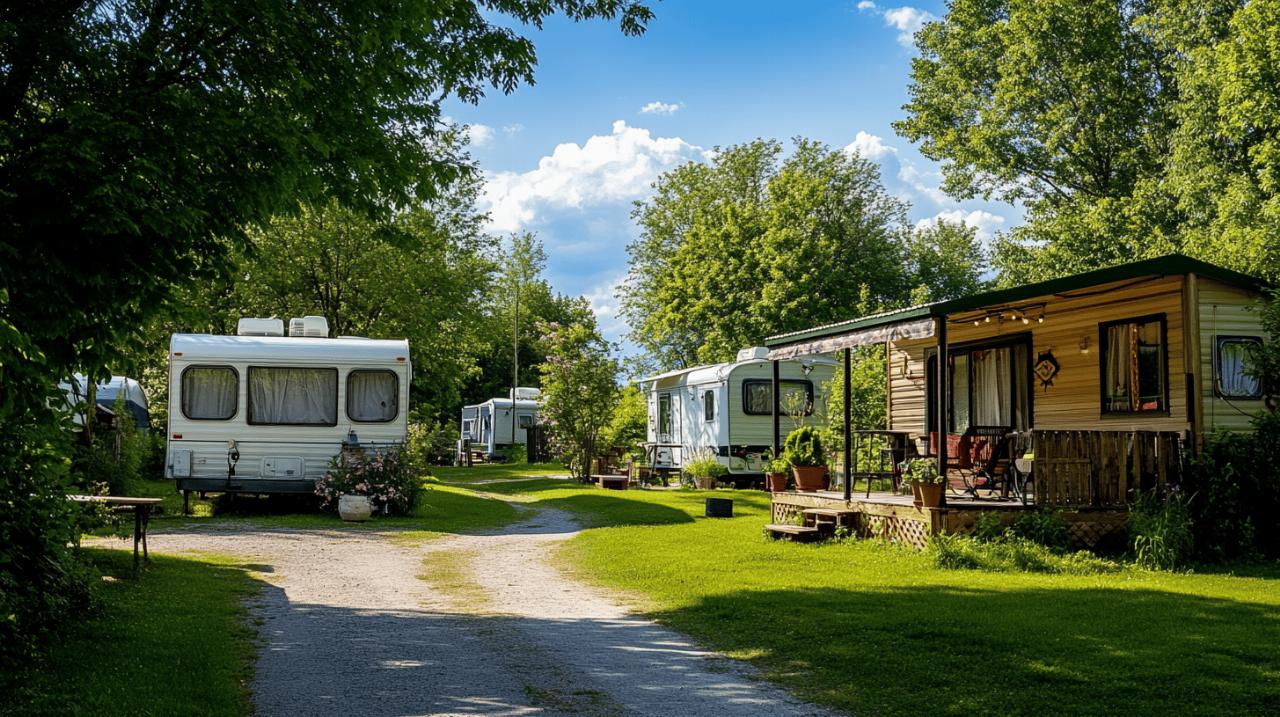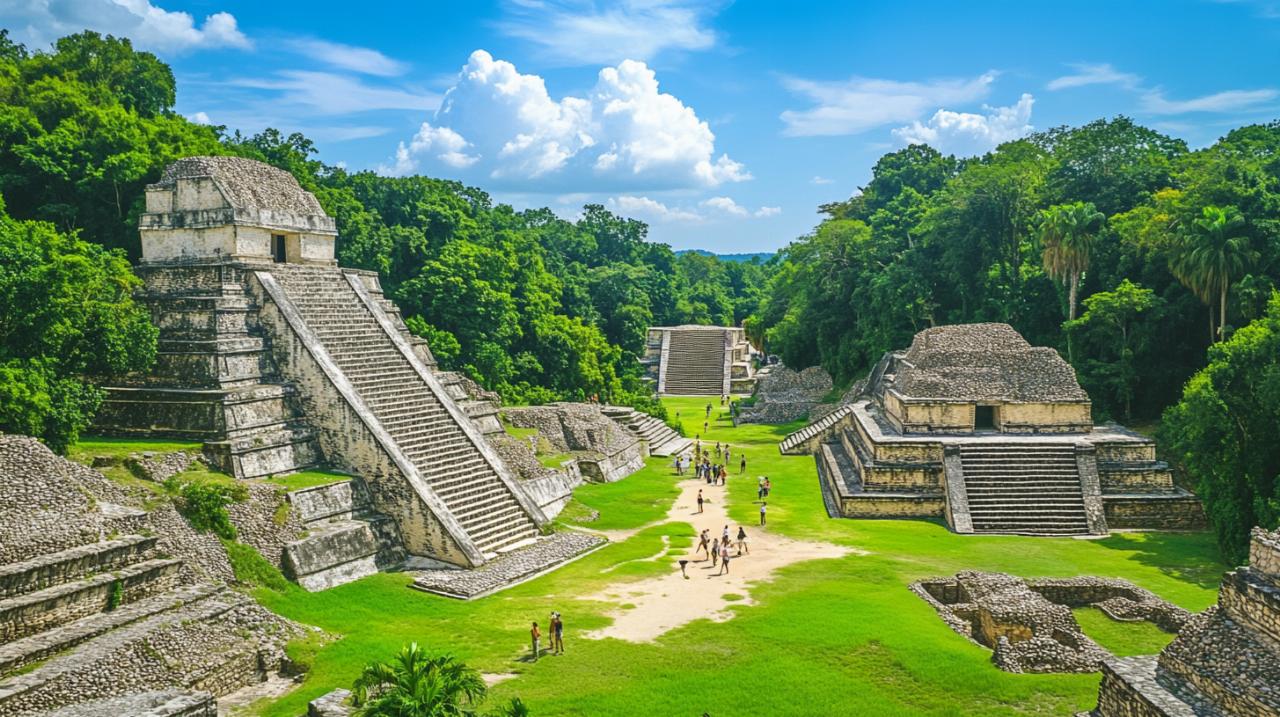Physical structure and mobility aspects
When comparing mobile homes and bungalows, understanding their fundamental structural differences is essential. Mobile homes, also known as static caravans, have seen increasing popularity across the UK as alternative living solutions. Unlike traditional housing, these structures are specifically designed with transport capabilities in mind, even if they remain in one location for extended periods.
Built for Transport vs Permanent Fixtures
Mobile homes are built on a chassis with wheels, making them technically movable despite their name suggesting otherwise. They must conform to specific size limitations to maintain their legal classification as caravans – no more than 20 metres in length, 6.8 metres in width, and 3.05 metres in height. This classification is crucial when considering planning permission requirements. In contrast, bungalows are permanent, immovable structures with foundations integrated into the ground, classified as conventional housing in every legal sense.
Design features and layout comparisons
The architectural approach differs significantly between these housing types. Mobile homes typically feature lightweight materials and streamlined designs that facilitate transportation when necessary. Modern static caravans often incorporate clever space-saving solutions and contemporary aesthetics. Bungalows, however, are constructed using traditional building materials like brick, stone, or timber frame, with designs that emphasise permanence and durability. While bungalows generally offer more substantial construction and better insulation, newer mobile homes have made impressive advances in thermal efficiency and build quality.
Interior layout and living experience
The internal living experience varies considerably between these two housing options, with each offering distinct advantages depending on your lifestyle preferences.
Modern adaptable spaces in mobile homes
Mobile homes are built for simple transport and usually have a more up-to-date, adaptable interior layout, letting you arrange things how you like. Modern static caravans often surprise visitors with their thoughtfully designed interiors. Many feature fitted kitchens with integrated appliances, space-efficient bathrooms, and multifunctional living areas that maximise the available square footage. Storage solutions are typically built-in and cleverly positioned to maintain open living spaces. The modular nature of many mobile homes allows for customisation during manufacturing, with various floor plans available from manufacturers like Willerby, whose models range from approximately £89,995 to £189,995 according to market listings.
Traditional Comfort and Space in Bungalows
Bungalows offer a more traditional living experience with their single-storey layout providing accessibility advantages. The interior spaces tend to be more generous, with conventional room divisions and higher ceilings than most mobile homes. This housing type typically provides a sense of permanence and solidity that appeals to those seeking a more established feeling home. The traditional construction methods allow for easier modifications and extensions compared to mobile homes, giving owners greater flexibility to adapt their living spaces over time as needs change.
Outdoor space and environmental integration
How these different housing types connect with their surroundings significantly impacts the overall living experience and often influences planning decisions.
Garden accessibility and outdoor living
Bungalows typically come with dedicated gardens or outdoor spaces that form an integral part of the property. These spaces often feature established planting, patios, and the potential for extension into the garden through conservatories or sunrooms. The relationship between indoor and outdoor spaces tends to be more seamless in bungalow designs. Mobile homes, particularly those placed within gardens of existing houses, may have access to shared outdoor spaces but typically lack the same level of garden integration. However, those situated in purpose-built parks often benefit from communal landscaped areas and facilities that individual properties might not offer.
Site placement and natural surroundings
The positioning of mobile homes allows for greater flexibility in relation to natural features. They can be situated to maximise views or solar gain without extensive groundworks. This adaptability makes them potentially suitable for countryside settings, though such placements often face stricter planning scrutiny. Bungalows, being permanent structures, require more substantial site preparation and foundation work, making their placement a more significant commitment. The environmental impact assessment for planning applications often considers how well either structure integrates with the local landscape character.
Planning permission and legal considerations
The regulatory framework governing these two housing types reveals perhaps the most significant practical differences for prospective owners.
Mobile home regulations and requirements
Contrary to popular belief, securing planning permission for mobile homes is not necessarily easier than for conventional houses. Local authorities generally prefer permanent dwellings that contribute to long-term housing stock and council tax revenue. For mobile homes intended for full-time residential use, planning permission requirements are typically similar to those for permanent dwellings. The situation changes somewhat when mobile homes are placed within existing residential curtilage. If the mobile home will be used as additional living space by residents of the main house rather than as an independent dwelling, planning permission may not be required. However, this arrangement must not change the land's primary purpose, for example by becoming rental accommodation.
Bungalow building permissions and restrictions
Bungalows fall squarely under standard building regulations and planning permission processes for new dwellings. The application process typically requires detailed architectural plans, site surveys, and potentially environmental impact assessments. Local authorities assess applications against their development plans and policies, considering factors like housing need, design quality, and impact on surroundings. While the process may be more straightforward in terms of classification, bungalow applications can face challenges related to land availability, development restrictions in protected areas, and design requirements in conservation areas. The planning process for either housing type can benefit from professional guidance, though potential applicants should approach planning consultants with critical thinking, verifying their track record with similar successful applications rather than relying solely on claims of insider knowledge.
Planning permission for alternative living options
 Looking at alternative housing solutions has become increasingly popular across the UK, with mobile homes (static caravans) gaining particular attention. Understanding the distinct planning requirements for these structures compared to traditional bungalows is vital before making any investment.
Looking at alternative housing solutions has become increasingly popular across the UK, with mobile homes (static caravans) gaining particular attention. Understanding the distinct planning requirements for these structures compared to traditional bungalows is vital before making any investment.
Mobile homes must meet specific legal definitions to qualify as 'caravans' – they're limited to 20m in length, 6.8m in width, and 3.05m in height. These structures are built for easy transport and typically feature modern, adaptable interior layouts that allow personalised arrangements.
Unlike mobile homes, bungalows are permanent constructions subject to standard house planning regulations. Whilst mobile homes might boast clever fitted kitchens and bathrooms, bungalows generally offer more spacious living areas and proper gardens, creating that settled feeling many Britons desire.
Off-grid solutions and countryside development
The dream of countryside living brings specific planning challenges. Contrary to popular belief, securing planning permission for a mobile home isn't easier than for a traditional house. Local authorities typically favour permanent dwellings that contribute to long-term housing stock and council tax revenue.
For those seeking off-grid solutions, options like shipping container homes and modular pods have emerged as alternatives. These structures might be used for various purposes – from full-time residences to holiday retreats, offices or farm buildings. When placed on agricultural land, planning regulations become particularly strict.
Temporary use might avoid permission requirements if the structure stays in one location for fewer than 28 days. For longer stays, especially in areas of natural beauty, planning permission becomes almost certainly necessary. The development's impact on neighbours regarding noise, light pollution and privacy will factor into planning decisions.
Special exceptions exist for agricultural workers and Romany travellers, who may benefit from different rights regarding mobile home placement. For everyone else, careful research into local planning policies is essential before investing in off-grid living solutions.
Local authority approval process for unconventional homes
The planning permission process varies significantly based on your intended use and location. For full-time residential use of a mobile home, you'll generally need planning permission similar to a conventional house. Holiday homes require permission if they remain in place for more than 28 consecutive days or 60 days total annually.
When placing a mobile home in your garden (within the curtilage of your house), permission might not be required if it serves as additional living space for main house residents rather than as an independent dwelling. The mobile home users should still use facilities in the main house, such as for meals or laundry.
Be wary of planning consultants who highlight their council connections. Their business model relies on submitting applications rather than ensuring approval. Before engaging consultants, research similar projects on your local planning portal and ask for evidence of comparable successful applications.
For mobile homes in established parks with existing permissions, you likely won't need additional planning approval for the structure itself, though park owner permission might be required. When developing on private land without an existing dwelling, full planning permission becomes necessary.
Failing to secure required permissions can result in substantial fines or enforcement actions requiring removal of the structure. Beyond planning, you'll need to address practical considerations including utilities connections, building regulations compliance, insurance, and ongoing maintenance.







